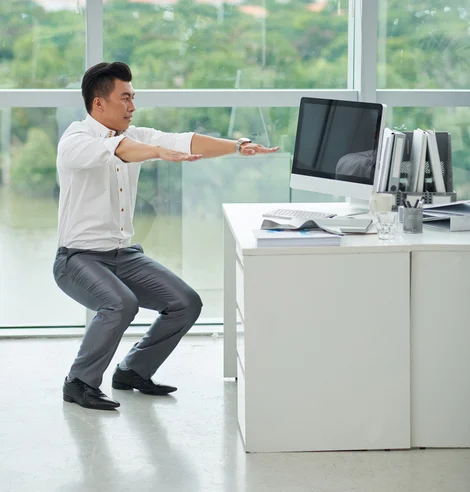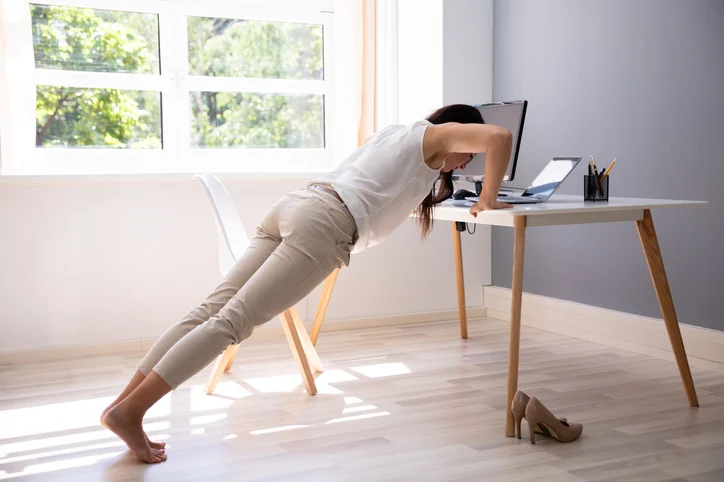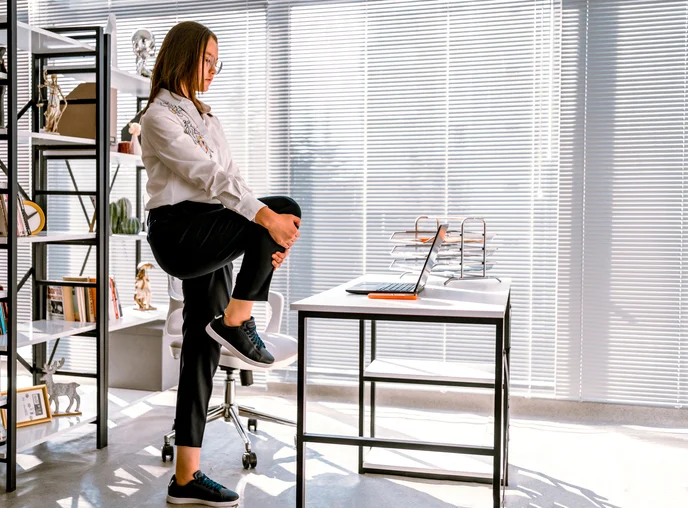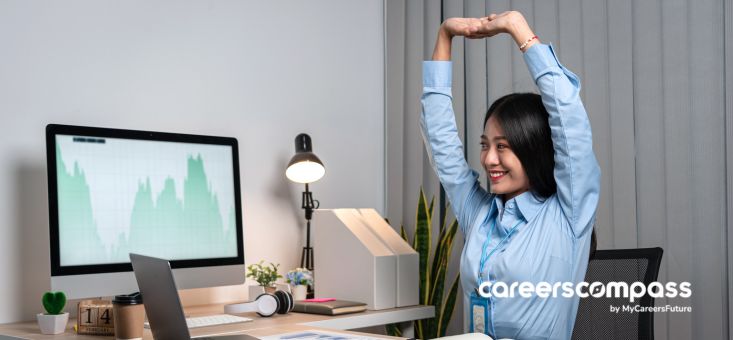If you’re unaware, World Health Day (WHD) is celebrated on 7 April every year to mark the anniversary of the founding of the World Health Organisation (WHO) in 1948.
On the topic of health, here’s a question for you: When was the last time you exercised?
Last week? Last month? Last year?
Before you cite a million and one reasons, highly likely this is one of the reasons why you haven’t: You simply don’t have the time.
The sedentary lifestyle is bad for you
Most people spend the bulk of their waking hours at work. This is probably why “no time” is one of the most common excuses, or should we say, the reason for the lack of exercise.
A study conducted by the NUS Saw Swee Hock School of Public Health and NUS Business School has found that office workers spend an average of seven hours every day sitting at their workstations.
While this may seem harmless, the prolonged lack of movement (reaching out for your cup of coffee across the table doesn’t count!) is actually bad for your health.
In fact, it increases your chance of dying!
Research conducted by a team of international experts discovered that there was a 9.9% chance of dying — during a follow-up period of two to 18 years — for those who sat for eight or more hours a day.
This is compared to a 6.8% chance for those who sat less than four hours a day and were active for at least an hour!
Some of the common health risks associated with a sedentary lifestyle are:
- Obesity
- Type 2 diabetes
- Cardiovascular disease
On top of that, poor posture due to prolonged sitting is also linked to back, neck and sciatica pain, explained Dr Bernice Liu, the Principal Physiotherapist at Sengkang General Hospital.
Dr Bernice added that for individuals who spend most of their waking hours sedentary, exercising for just an hour once in a while is not going to negate the effects of prolonged sitting.
Simple exercises you can do right at your workstation
For the busy folks, we’ve got you covered with these five simple exercises you can do right at your workstation!
A word of caution: It’s best to check with your doctor before you start to exercise and always listen to your body to not over-exert yourself.
Here’s a muscle map for you to refer on the muscles that will be worked on for each of the exercises:

1. Squats
Muscle groups worked: Quadriceps, glutes, hamstrings, and core

How to do:
- Stand tall, with your office chair behind you. Keep your feet shoulder-width apart and your hands stretched out in front of you.
- Bend your knees until your buttocks almost touch your chair (or at a level that you can feel enough stretch on your thighs)
- Return to the starting position and repeat 10 or more times
2. Desk push-ups
Muscle groups worked: Triceps and chest

How to do:
- Face your desk (make sure your desk is anchored firmly first) and lean against it, with your hands slightly wider than your shoulders and your arms straight.
- Lower yourself until your chest almost reaches your desk, then return to the starting position.
- Repeat for at least 10 reps.
3. Knee grab
Muscle groups worked: Quadriceps, core, glutes, and hamstrings

How to do:
- Stand tall, with your feet shoulder-width apart.
- Lift one knee as high as you can without leaning back.
- Hug the knee with both arms and stay in position for five seconds.
- Alternate with your other knee.
- Repeat at least 10 times on each side.
4. Arm and leg extensions
Muscle groups worked: Deltoids, triceps, quadriceps, glutes, and hamstrings

How to do them:
- Stand beside your desk and place one hand on the desk as support (again make sure your desk is anchored firmly first!).
- Lift one arm to 90 degrees angle and lift a leg to a level you feel the most stretch on your thigh.
- Hold for 10 seconds, then return to a standing position.
- Repeat 10 times on each side.
5. Jumping Jacks
Muscle groups worked: full body

How to do:
- Stand with your arms by your sides and your feet shoulder-width apart.
- Jump up and land with your feet wider and your hands over your head.
- Jump again to return to the start position.
- Repeat at least 10 times.
Read More: Job-Hunting? Tips to Keep You Healthy and Positive
Take small but consistent steps
If you have not been exercising for a while, it’s best to start slow even with these simple exercises so that you don’t shock or put too much stress on your body.
The objective of these five simple exercises is to motivate you to include some movement in your sedentary lifestyle without taking too much of your time away from work.
On top of physical fitness, it is also important to take care of your mental health. If you’re feeling stressed at work, seek professional help.
For advice on work-related matters, register here to reach out to a career coach.















